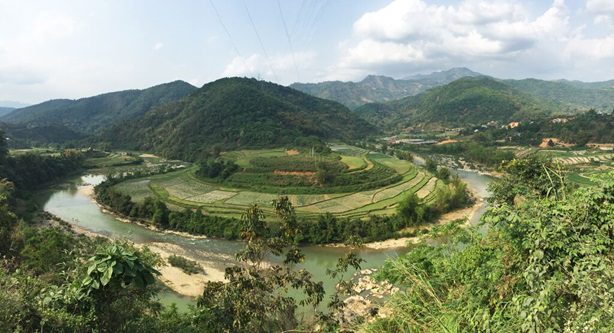 Vietnam, like many renowned destinations, grapples with the impacts of over-tourism. Iconic sights like Halong Bay, touted as picture-perfect on social media, often leave travellers disheartened by the contrast between expectation and reality when seeing first-hand the environmental toll of excessive visitation.
Vietnam, like many renowned destinations, grapples with the impacts of over-tourism. Iconic sights like Halong Bay, touted as picture-perfect on social media, often leave travellers disheartened by the contrast between expectation and reality when seeing first-hand the environmental toll of excessive visitation.
However, there are many incredible under-explored places awaiting in Vietnam, and InsideAsia Tour’s is helping visitors move away from the tourist trail and into the heart of local life and culture. Our destination experts have developed a destination guide throughout the northern regions of Vietnam, which we thought may work as a standalone story, or tie into World Earth Day next Monday 22 April?
See below for an overview, all of which can be experienced on InsideAsia’s ‘Vietnam’s Northern Soul’ itinerary. Let us know your thoughts and if there’s anything else you need. I’ve included a quote to support below.
Vietnam Bucket List Reimagined: Five Stop Destination Guide Through Northern Vietnam
Ba Be:
Visit the beautiful national park known for its serene lakes, lush rainforest, silk waterfalls and thriving biodiversity. This is the heartland of the Tay, Dzao and Hmong ethnic minorities, and the best way to explore it is by boat – cruising on the lakes and stopping to explore quiet temples, hidden caves, and some of the most mesmerising waterfalls in Southeast Asia. Visit the Thai Nguyen Museum of Ethnology, packed full of information about Vietnam’s 53 minorities. For lovers of the great outdoors, this pristine wilderness is perfect for hiking, kayaking, boating, caving and so much more.
Meo Vac:
From the Tay villages of Ba Be, journey on over the stunning Colia Pass to Meo Vac, a townlet in a remote part of Ha Giang Province. Watch from your car as the mountain scenery becomes more dramatic and stop to take an hour’s walk around a San Chi or Lo Lo village, before continuing with your drive through one of the most remote parts of Vietnam, Can Bang, onwards to Meo Vac. All these ethnic minorities maintain their own languages, traditions, and traditional costumes, and as you travel through their lands, you’ll start to get a sense of the magnificent diversity of this region.
Quan Ba:
Snake your way along the Mai Pi Leng Pass – a route that wriggles its way along a plunging valley terraced with some of the steepest rice paddies you’ll ever see. On route to Quan Ba, take in the stunning scenery and village stops, and get to know more of the minority cultures. Visit the intriguing Vuong Palace, a Chinese-style courtyard mansion built by the French for an opium-dealing Hmong family in the 1920s. Not something you see often in these remote hills!
Hoang Su Phi:
Leaving Quan Ba behind, continue your journey on to Hoang Su Phi. Cloaked in lush forest, tea fields and some of the most impressive rice terraces in Vietnam, Hoang Su Phi is a dramatic contrast to the rocky landscapes around Meo Vac, revealing yet another side of northern Vietnam. Stay in a friendly guesthouse surrounded by ornamental ponds and experience a taste of warm hospitality and hearty cuisine.
Hanoi/Lan Ha Bay:
The lesser-known sibling of Halong Bay, La Ha Bay impresses with towering cliffs and pristine beaches away from the crowds. Take in the limestone karsts, kayak through secluded lagoons, and immerse in the vibrant marine life that thrives beneath the surface. Snorkel in crystal-clear waters or simply relax and soak in the exotic beauty. This destination is perfect for the adventure seekers or those looking to simply unwind in paradise.
Commentary attributed to InsideAsia Tours Destination Specialist, Jarrod Sinclair:
“For those seeking authentic exposure to local life and culture in Vietnam, we recommend visiting the northern regions and going deep into the rural backcountry. We encourage travellers to reframe their mindset when thinking about a trip to Vietnam, because there’s so much to be discovered away from the tourist trail – on a cultural adventure style expedition. From dramatic scenery of the rice terraces, winding mountain passes, quiet temples, misty waterfalls and limestone karsts, to meeting local minorities, tasting delicious cuisine and gaining a glimpse into the prevailing traditions, there’s so much more to explore. The specialists at InsideAsia can coordinate a bespoke self-guided cultural adventure to suits interests, timeframes, and budgets.”




















